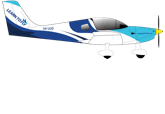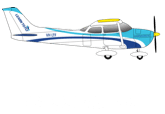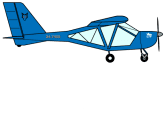The Commercial Pilot Licence (CPL) course sees you progress through RPL and PPL syllabus before moving onto CPL theory and practical training, and then hour building as you accumulate at least 150 flying hours. The cost will vary based on the aircraft that you choose to fly in during your training, and there are specific aircraft requirements for CPL that may mean you need to change aircraft when you start the CPL syllabus.
The most economical way to obtain a CPL is with our CPL flight package. The package includes all of the required theory and practical aircraft training, and minimum flying hours, and also makes use of our state-of-the-art simulators to keep costs down.
Note that there are ancillary items that are not included in the package that you will incur during your training, such as landing fees at other aerodromes. Many students end up flying more than the minimum hours before they take their CPL flight test, so that also needs to be considered. You may wish to add in multi-engine training as well. Example CPL packages prices are listed below.
CPL package flying in a Diamond DA40 $77,995
Add in multi-engine training in a Diamond DA42 $83,135
To view current pricing, aircraft options and packages, please download the Commercial Pilot Licence course guide. If you already hold a PPL and just want to complete the CPL syllabus on its own, please chat with one of our flight training specialists.
In Australia, to start the Private Pilot Licence (PPL) training, you’ll first need to finish the Recreational Pilot Licence (RPL) training syllabus. So, to determine the total cost of obtaining your PPL you will also need to factor in that training. The overall cost will also depend on what aircraft you choose to fly during your training.
Some cost examples are below, based on our flight package pricing. These packages can be split into interest-free monthly instalments via SplitIt. Note that there are some ancillary items not included in the flight package, such as landing fees at different airports. We also have Pay As You Fly options available.
To view current pricing, aircraft options, package inclusions and all payment options, please download the Recreational Pilot Licence and Private Pilot Licence course guides.
We do hire our students including international students and have flight instructors who are employed in their first flying job. We are committed to the development of future pilots and transitioning them into pilot careers once they hold the required licences. We also offer Pilot Job Guarantee Program, contact us to get more information.
Learn to Fly has insurance cover for the following:
- $5 million Liability Insurance which covers all of our flying operations.
- $15 million Hangar Keeper’s Liability Insurance which covers all ground operations including incidents and accidents happening within the school and on the apron.
Students and Trial Introductory Flight customers should contact their insurance provider for advice on any personal insurance cover they may wish to take out for their flight or flight training.
It’s best to be critical and demanding in regards to your flight training to ensure you are getting the most value from your time and money. There are a few warning signs you can lookout for to ensure your training is unfolding the way it should. Things to watch out for include:
- Constant rescheduling or cancellation of lessons not due to weather
- Failure to provide proper briefings
- Constant changes of Instructor
- Inconsistency within the school
- Limited or no time with senior pilots
- No proper debriefing
- Poor paperwork
Check out our blogs on 8 Ways To Maximise Your Flight Training and The Most Common Student Pilot Mistakes for some extra tips.
There is a certain amount of risk in everything we do. Flying an aircraft has some degree of risk, and for that reason, they must be treated with care and respect. If you learn to fly safely with experienced and professional instructors then you will go a long way towards reducing that risk. Your safety and that of the aircraft and its occupants is the most important objective for our instructors. All of our aircraft are maintained to the highest Australian Civil Aviation Safety Authority (CASA) standards. Statistically, flying is actually safer than driving a car on the road!
Airsickness is completely dependant on the individual. Some people will have a tendency to feel airsick initially, but as time passes and you feel more confident in the aircraft the chance of feeling sick is significantly reduced. If you have previously suffered motion sickness it’s best to let your instructor know.
Flight Instructor experience and seniority are divided into three grades numbered 1 through 3, with Grade 1 being the highest. An instructor’s progression to a higher grade is based on achieving at least the required number of flying instruction hours as well as satisfactory reviews. Several hundreds of hours are involved in this process.
In addition to this, instructors often undertake other ratings and endorsements, fly recreationally and participate in other flying activities. Consequently, their total flying hours is likely to be much greater than just their instruction hours, as will be their overall flying experience. Several of Learn To Fly Melbourne’s instructors have total flying hours in the thousands, and even some in the tens of thousands!
Safety is always paramount at Learn To Fly Melbourne, and for both flight lessons and Trial Introductory Flights, we will assess the weather ahead of time to determine whether your flight has a good chance of going ahead. If it is looking likely that the weather may cause your flight to be cancelled, we will contact you to reschedule. There may be times when changeable weather means that we need to cancel flights unexpectedly or at short notice, but we try to be as proactive as possible.
For student pilots, your instructor is trained to assess weather conditions and determine whether flying will be suitable for your level of experience. There may be times when your instructor “pushes the envelope” and encourages you to fly in less than suitable conditions. This is done so that experience is gained with poor weather conditions and techniques that help maintain a good safety margin.
Sorry, you are not allowed to bring passengers on a Trial Introductory Flight.
Whilst studying your Recreational Pilot Licence (RPL), you will generally spend around 2-2.5 hours at the airport — 1 hour in the air, with the remaining 1-1.5 hours split between classroom briefing, aircraft preparation and debriefing.
When you are studying your Private Pilot Licence, you may need 4-6 hours at the airport — which will be made up of 2-4 hours in the air, with the remaining 1-2 hours split between flight planning, classroom briefing, aircraft preparation and debriefing.


